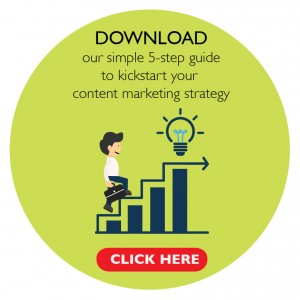We are not living in a world populated with robots (well not yet anyway), and people are becoming less and less receptive to the direct sales approach. Instead, it’s all about conversational content. Readers don’t want to be spoken to – they want to feel like they are speaking with you.
Think about the last conversation you had. How was the flow? The tone? What about the language you used? This is how you want to ‘speak’ to your readers, and your words alone should be enough for them to want to engage with your brand.
As many of us do struggle with writing in a conversational manner and actually making it sound good at the same time, here are some tips on how to sound less like a robot and more like a human:
It’s time to get real
Remember you are talking to other humans. Be real and be yourself. It’s ok to sound knowledgeable and professional, but come on, no one will understand that fancy terminology, nor will they care to be honest.
People want to get excited by what they see and read. Our attention spans are getting shorter and shorter, and so many new things constantly distract us. It’s so important to make every word count. Get to the point and remove all that fluff and technical jargon.
Tell a story
Every piece of content you write should tell a story. Let’s take a look at bios. If your personal or company bio is too serious, with too many big and important-sounding words, it’s going to drive people away.
You want to avoid intimidating people. Not everyone will have a full understanding of your trade, so if you are talking about a high tech solution without explaining it in layman’s terms, people will be interested (mainly because they won’t know what it is you actually do). Instead, they will move on and well, that there is the loss of a potential lead.
State what you do, and state it clearly. The trick to inspiring your readers is of course with great content, but equally as important is how easy it is to absorb.
Check out this great example from Google:
Everything on their website about Google is so easy to absorb. It has a friendly tone, is brief and to the point, and is simple and easy to understand. Yes I know, we all know what Google is and what they do, but if you had no previous knowledge of the company, this would be enough information to get you there.
Google could have easily started trying to explain the tech side and the algorithms, and…. Oh look a squirrel (that’s us getting distracted by something more interesting).
Here’s a personal bio that we love. Note the light tone and sense of humour used in this one. Yes, this is obviously a fake profile, but we really do need to appreciate the creative content.
And finally, if Hillary Clinton can make politics sound fun, I’m sure we can make our jobs sound equally as exciting, if not more.
Get Inspired
Ok so if by now, Google, Darth Vader and Hillary Clinton haven’t inspired you to rethink your content, then perhaps try someone that will. What do you like to read? Who or what inspires you? Why do they inspire you? Is it the language, the content, the voice – Or all three?
Read some different blogs, bios and articles, and apply what you like to read to your own content.
Read it out loud
This part is particularly important. When writing our own content – whether for yourself or for a company – you are going to be too close to the subject. Try to avoid selling and have a bit of fun when writing (we don’t always need to be so serious). Trust us – with the right tone, even serious topics can sound fun!
Once you’ve written your content, read it out loud. How does it sound? If you are bored, start again. It’s also great to ask someone that isn’t familiar with your product or service to read your work. This is the best way to know whether you’re on the right track.
Now it’s your turn – go out and inspire someone with your words!
Need help with your content? Drop a message to [email protected]













